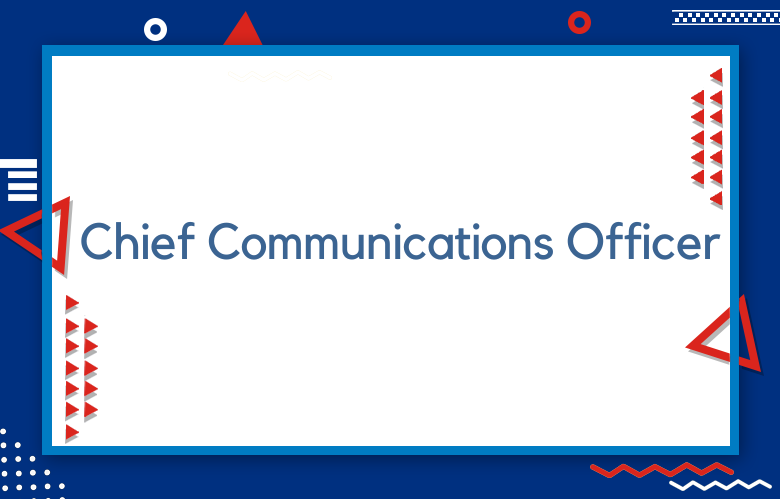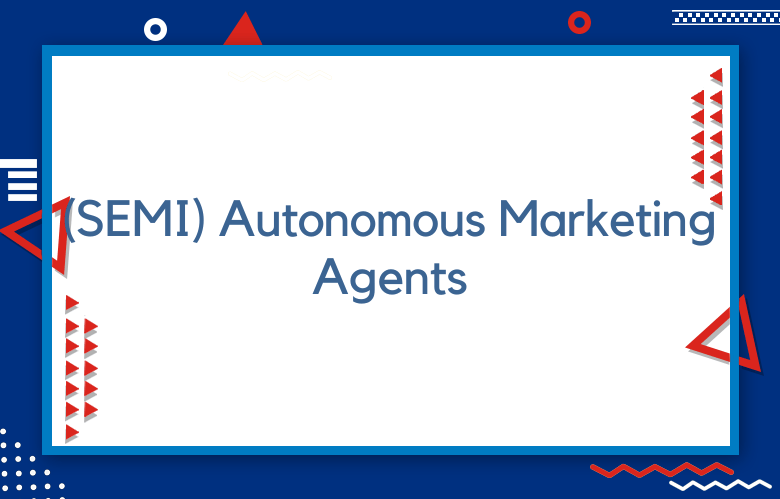Chief Communications Officer (CCO) Role and Responsibilities

The Chief Communications Officer (CCO) is a senior executive responsible for developing and executing an organization’s communications strategy. The CCO is critical in shaping the organization’s public image, building and maintaining relationships with key stakeholders, and ensuring consistent messaging across all channels.
Chief Communications Officer (CCO) Role and Responsibilities
The CCO is critical in shaping the organization’s public image, building and maintaining relationships with key stakeholders, and ensuring consistent messaging across all channels.
By developing and executing a comprehensive communications strategy, leading the communications team, building and maintaining relationships with key stakeholders, developing and implementing crisis management plans, monitoring and analyzing media coverage, developing and implementing employee communications programs, collaborating with other senior executives, and managing the organization’s brand and reputation, the CCO helps to ensure the organization’s success and long-term sustainability.
Key Responsibilities of a CCO
The CCO’s responsibilities typically include:
Developing and Executing a Communications Strategy
The CCO develops and executes a comprehensive communications strategy that aligns with the organization’s overall business objectives. This strategy includes internal and external communications, media relations, and crisis management.
Leading the Communications Team
The CCO leads the communications team, providing guidance and support to team members and ensuring that all communications activities align with the organization’s overall strategy.
Building and Maintaining Relationships with Key Stakeholders
The CCO builds and maintains relationships with key stakeholders, including the media, investors, customers, and employees, to enhance the organization’s public image and reputation.
Developing and Implementing Crisis Management Plans
The CCO develops and implements crisis management plans to ensure the organization is prepared to respond effectively to any crisis or reputational threat.
Monitoring and Analyzing Media Coverage
The CCO monitors and analyzes media coverage to identify trends, opportunities, and potential threats to the organization’s public image and reputation.
Developing and Implementing Employee Communications Programs
The CCO develops and implements employee communications programs to ensure employees are informed and engaged with the organization’s goals and initiatives.
Collaborating with Other Senior Executives
The CCO collaborates with other senior executives to ensure alignment of the communications strategy with overall business objectives.
Managing the Organization’s Brand and Reputation
The CCO manages the organization’s brand and reputation, ensuring that all communications activities support and enhance the organization’s public image.
Mastering the Art of Communication: Insights from a Chief Communications Officer
Mastering the art of communication is essential to success as a chief communications officer (CCO). Effective communication is the foundation of building and maintaining relationships, conveying messages clearly, and achieving organizational objectives.
Here are some insights from a CCO on how to master the art of communication:
Understand Your Audience
The first step to mastering the art of communication is understanding your audience. Knowing who you are communicating with and what they care about is crucial to crafting a resonant message. Take the time to research and understand your audience’s needs, preferences, and pain points.
Craft a Clear and Concise Message
A clear and concise message is essential to effective communication. Avoid jargon and technical language, and focus on delivering your message simply and straightforwardly. Use simple and direct language, and keep your message concise and to the point.
Leverage Multiple Channels
To effectively reach your audience, leverage multiple communication channels. This includes traditional channels such as email and phone, as well as digital channels such as social media and online forums. By leveraging multiple channels, you can ensure that your message reaches your audience where they are most active.
Engage in Two-Way Communication
Communication is not just about delivering a message but also about listening and engaging with your audience. Encourage feedback and engage in two-way communication to build relationships and improve your understanding of your audience’s needs and preferences.
Measure and Analyze Your Communication Efforts
Measure and analyze your communication efforts to understand what is working and what is not. Use analytics and feedback to identify areas for improvement and adjust your communication strategy accordingly.
The Strategic Role of a Chief Communications Officer in Modern Organizations
The role of a Chief Communications Officer (CCO) has become increasingly strategic in modern organizations, as effective communication has become a critical component of success. A CCO is crucial in shaping an organization’s public image, protecting its reputation, and building trust with key stakeholders. In this article, we will explore the strategic role of a CCO in modern organizations.
Internal Communication
A CCO is responsible for managing internal communication within an organization, ensuring that employees are informed and engaged with the organization’s goals and initiatives.
This includes developing and implementing employee communication programs like town hall meetings, newsletters, and intranet content. By fostering open and transparent communication within the organization, a CCO can help to create a positive and inclusive culture that supports employee engagement and retention.
External Communication
A CCO is also responsible for managing external communication, including media relations, social media, and other communication channels that reach the organization’s stakeholders. This includes developing and executing a comprehensive communication strategy that aligns with the organization’s business objectives and protects its reputation.
By building and maintaining relationships with key stakeholders, such as customers, investors, and the media, a CCO can help to create a positive and consistent brand image that supports the organization’s growth and success.
Crisis Communication
In today’s fast-paced and uncertain world, crises can arise suddenly and significantly impact an organization’s reputation. A CCO is critical in developing and implementing crisis communication plans, ensuring the organization is prepared to respond effectively to any crisis or reputational threat. By managing the organization’s response to a situation, a CCO can help protect its reputation and rebuild stakeholder trust.
Stakeholder Engagement
Stakeholder engagement is a critical component of a CCO’s role, as building and maintaining relationships with key stakeholders is essential to an organization’s success. A CCO is responsible for engaging with stakeholders, such as customers, employees, investors, and the media, to gather feedback and build relationships that support the organization’s growth and success. By fostering positive relationships with stakeholders, a CCO can help to create a supportive ecosystem that benefits the organization and its stakeholders.
Reputation Management
Reputation management is critical to a CCO’s role, as an organization’s reputation can significantly impact its success. A CCO monitors and analyzes media coverage to identify trends, opportunities, and potential threats to the organization’s reputation. By proactively managing the organization’s reputation, a CCO can help to protect its brand image and support its growth and success.
From Chaos to Clarity: How a CCO Manages Internal and External Communication
Chief Communications Officer (CCO) has become increasingly important in today’s fast-paced and ever-changing business landscape. Effective communication is critical to achieving success in an organization, and a CCO plays a vital role in managing internal and external communication.
The Challenge of Managing Internal and External Communication
Internal and external communication are essential to an organization’s success but present different challenges. Internal communication involves communicating with employees, while external communication involves communicating with customers, investors, and other stakeholders. Both types of communication require different strategies and approaches, and a CCO must manage both effectively.
Internal Communication
Internal communication involves communicating with employees to ensure they are informed and engaged with the organization’s goals and initiatives. A CCO must develop and implement employee communication programs like town hall meetings, newsletters, and intranet content. By fostering open and transparent communication within the organization, a CCO can help to create a positive and inclusive culture that supports employee engagement and retention.
External Communication
External communication involves communicating with customers, investors, and other stakeholders to build and maintain relationships that support the organization’s growth and success. A CCO must develop and execute a comprehensive communication strategy that aligns with its business objectives and protects its reputation. By building and maintaining relationships with key stakeholders, a CCO can help to create a supportive ecosystem that benefits the organization and its stakeholders.
Communication Superpowers: The Secrets of Effective CCOs
Influential Chief Communications Officers (CCOs) possess unique skills and abilities that enable them to excel. These “communication superpowers” include exceptional communication skills, strategic thinking, and building and maintaining relationships with key stakeholders. In this article, we will explore the secrets of effective CCOs and how they use their communication superpowers to create a compelling narrative for their organization.
Strategic Thinking
Effective CCOs can think strategically, identify opportunities and challenges, and develop communication strategies that support the organization’s overall business objectives. They understand the broader context in which the organization operates and can anticipate potential communication issues and opportunities.
Exceptional Communication Skills
CCOs must possess exceptional communication skills, including written, verbal, and nonverbal communication. They must be able to convey complex ideas clearly and concisely, using language that is appropriate for the audience and the situation. Effective CCOs are also skilled at active listening, enabling them to understand stakeholders’ needs and concerns and respond appropriately.
Relationship-Building
CCOs are responsible for building and maintaining relationships with key stakeholders, including customers, employees, investors, and the media. They must be able to establish trust and credibility with these stakeholders and foster positive relationships that support the organization’s success.
Emotional Intelligence
CCOs must possess high levels of emotional intelligence, enabling them to understand and manage their emotions and those of others. This ability allows for them to navigate complex and sensitive situations effectively and to build positive relationships with stakeholders.
Conclusion
The Chief Communications Officer (CCO) plays a vital role in shaping an organization’s public image, managing its reputation, and fostering a positive relationship with its stakeholders. The CCO leads the development and execution of communication strategies that align with the organization’s overall goals and objectives.
To succeed in this role, the CCO must possess excellent communication skills, strategic thinking, and the ability to build strong relationships with internal and external stakeholders. The CCO’s responsibilities encompass various areas, including media relations, internal communications, crisis management, and brand development.
By effectively executing their responsibilities, the CCO can help an organization build trust, enhance its reputation, and achieve its business objectives. The CCO’s role has become increasingly important in today’s digital age, where effective communication is essential for success.



